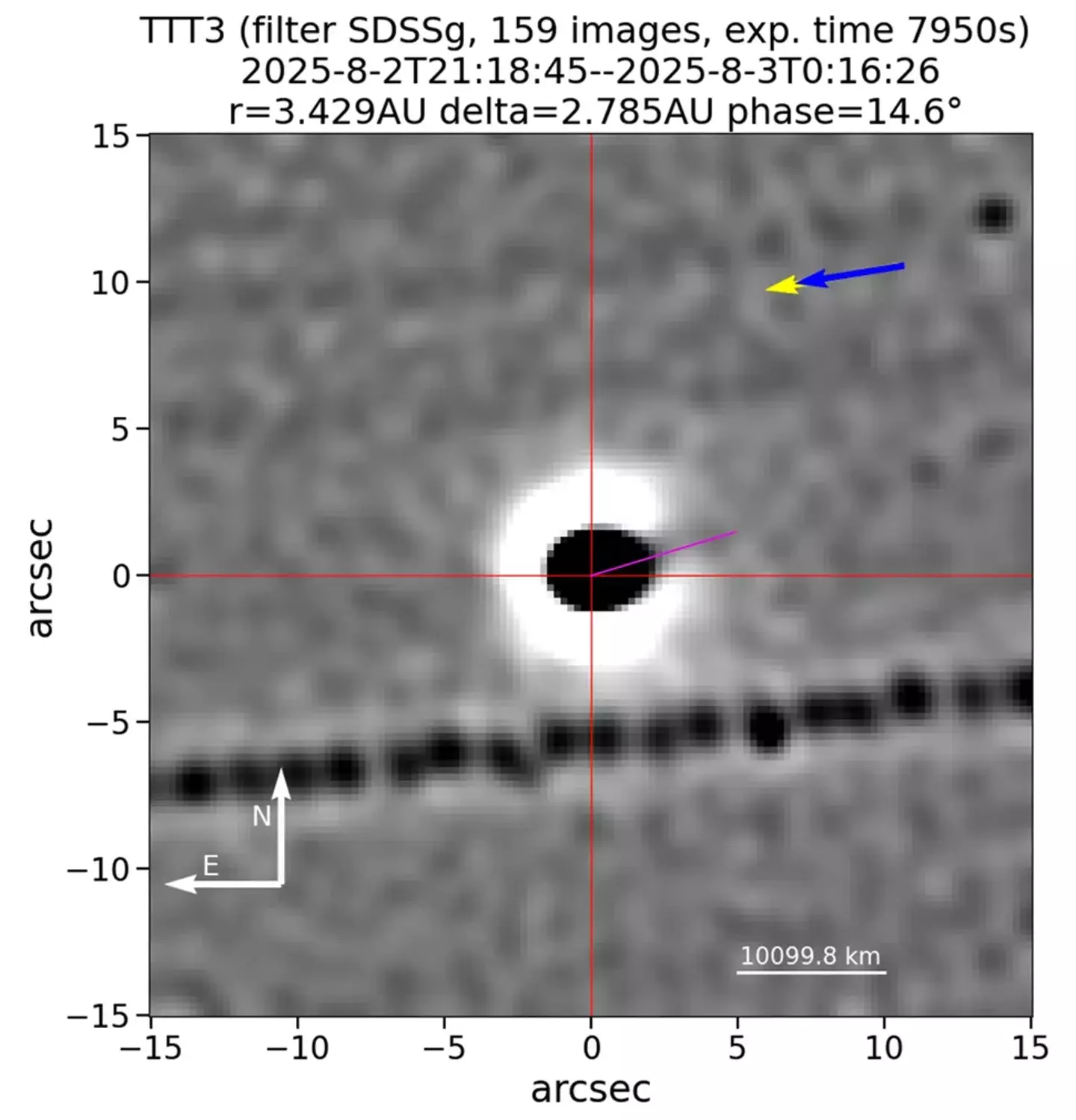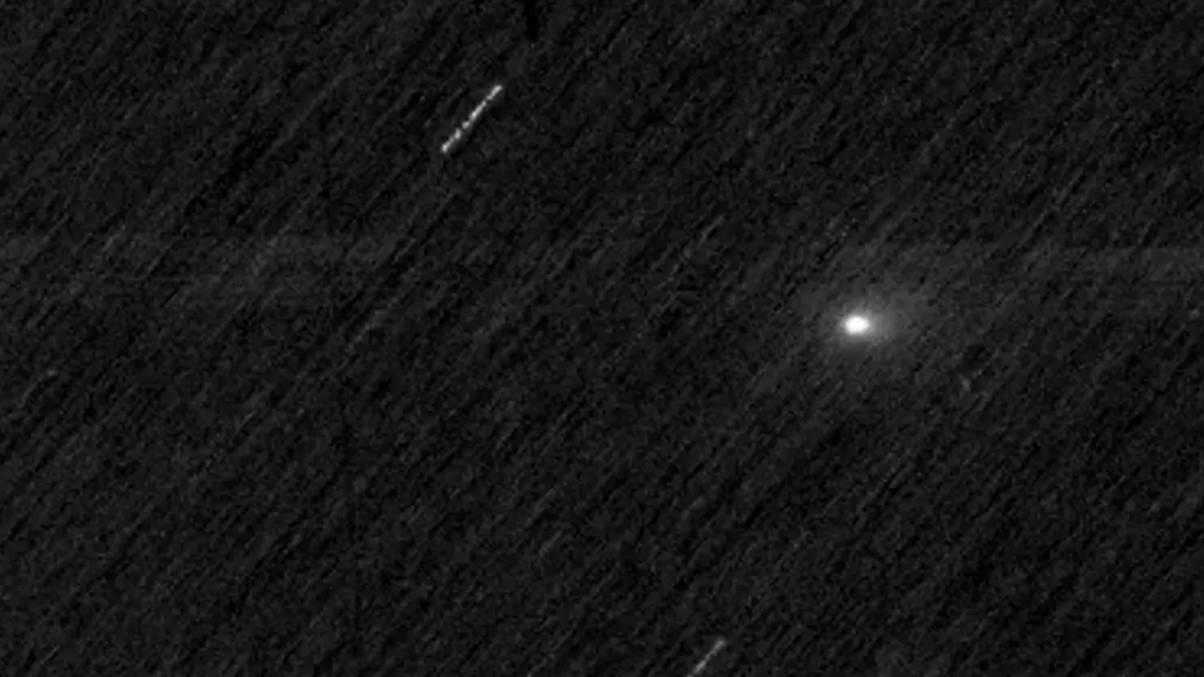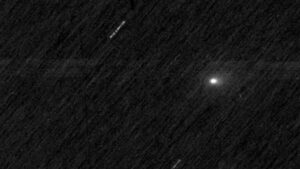Harvard Scientist Reveals Mysterious Space Object Approaching Earth Mimics Alien Technology—What Could It Be?
So, astronomers have stumbled upon the third known interstellar visitor zipping through our solar system — a cosmic drifter named 3I/ATLAS. NASA’s calling it “interstellar” because its orbit’s a wild hyperbola, meaning it’s definitely not sticking around for a neighborhood BBQ with the Sun. Zooming at a pace of 130,000mph, this isn’t your average comet; it’s more like a mysterious speedster from parts unknown, leaving scientists scratching their heads about where it came from. And get this — while it looks like a run-of-the-mill cloud of gas and dust, Harvard’s physicist Avi Loeb thinks 3I/ATLAS might just be pulling moves more alien spaceship than space rock, flashing tail reversals that have the experts asking, “Wait, is this thing braking… on purpose?” Whether it’s a cosmic comet or an intergalactic hitchhiker, one thing’s certain: 3I/ATLAS is bringing some serious interstellar drama right to our celestial doorstep. Curious to dive deeper into this space oddity? LEARN MORE
Astronomers have come across the third known interstellar object from outside our solar system.
NASA says 3I/ATLAS is classified as being ‘interstellar because of the hyperbolic shape of its orbital path’, which means that ‘it does not follow a closed orbital path about the Sun’.
“When the orbit of 3I/ATLAS is traced into the past, the comet clearly originates from outside our solar system,” the space agency explained.
Initial observations showed that the object was a coma (a cloud of gas and dust), as opposed to a giant Earth-destroying asteroid.
But for it to be travelling at 130,000mph means it’s simply too fast to be gravitationally bound by the Sun.
“No one knows where the comet came from,” said David Jewitt, the science team leader for the Hubble observations.

NASA thinks 3I/ATLAS is just a comet (NASA)
“It’s like glimpsing a rifle bullet for a thousandth of a second. You can’t project that back with any accuracy to figure out where it started on its path.”
But theoretical physicist Avi Loeb, of Harvard University, thinks that the mystery object has just carried out a move that is reminiscent of an ‘alien spacecraft’ braking.
The director of the Institute for Theory and Computation at the Center for Astrophysics says 3I/ATLAS performed what looked like a tail reversal – when particles stream towards the Sun.
And the Nordic Optical Telescope confirms that the tail reversals from July and August are no longer there and that a new one has formed in the opposite direction.

3I/ATLAS is just the third interstellar object ever recorded to enter our solar system (NASA)
Researchers from the Universities of California and Oslo discovered that 3I/ATLAS is releasing material as sunlight strikes its surface. Observations from NASA’s space telescopes revealed that the object is losing roughly 330 pounds of material every second, composed of about 87 percent carbon dioxide and nine percent carbon monoxide.
“We cannot infer the true nature of 3I/ATLAS from the skin layer it has shed so far,” Loeb said.
“If the object were an alien spacecraft slowing down, and the anti-tail represented braking thrust, this shift from anti-tail to tail would be entirely expected.”
He notes that 3I/ATLAS has been behaving in a different way to other interstellar objects like ‘Oumuamua in 2017 and comet Borisov in 2019.

The interstellar object has been travelling at 130,000mph (NASA)
3I/ATLAS not only shows an anti-tail, but also dramatic colour variations, as well as an enormous surrounding coma, which is a cloud of gas and dust around the nucleus.
He explained that in spaceflight, the optimal moment to accelerate or decelerate a spacecraft is when it is nearest to a massive object, as firing the engine at that point – known as the Oberth effect -produces the greatest change in velocity.
“If 3I/ATLAS is a massive mothership it will likely continue along its original gravitational path and ultimately exit the Solar System,” the scientist added.
“In that case the Oberth manoeuvre might apply to the mini-probes it releases towards Solar system planets.”
Despite Loeb’s concerns, NASA said that ‘Comet 3I/ATLAS poses no threat to Earth and will remain far away’.
“The closest it will approach our planet is about 1.8 astronomical units (about 170 million miles, or 270 million kilometres),” it explained.
“3I/ATLAS will reach its closest point to the Sun around Oct. 30, 2025, at a distance of about 1.4 au (130 million miles, or 210 million kilometres) – just inside the orbit of Mars.”




















Post Comment